Contents
- Composition and form of release of the drug Lontrel
- The active ingredient of the herbicide Lontrel
- Advantages and disadvantages
- Preparation of working solution
- Application instruction of herbicide Lontrel-300
- Compatibility with other means
- Safety Precautions
- Analogues of the drug Lontrel-300
- Conclusion
- Reviews of summer residents about the drug Lontrel-300
Weeds in the garden are a problem that is familiar to absolutely all gardeners firsthand. It takes a lot of time and effort to weed the beds by hand. Recently, however, chemicals have appeared that can “selectively” destroy weeds without harming cultivated plants. These include the herbicide Lontrel-300. The drug receives mostly positive reviews, but to achieve the desired result, you must first study the manufacturer’s instructions and all the nuances of its use.
Composition and form of release of the drug Lontrel
Lontrel-300 is a post-emergence systemic herbicide approved for use in home gardens. The drug is produced by a well-known company from the USA DOW AgroSciences. In “amateur” gardening, the herbicide Lontrel-300 is mainly used to protect against weeds in beds with strawberries, beets, onions and garlic, on lawns.
The drug is most effective against the following weeds:
- thistle (yellow, pink, other subspecies);
- field thistle, cornflower, vetch;
- coltsfoot;
- thistle;
- any kind of chamomile;
- burdock;
- hogweed;
- dandelion.

In Our Country, the herbicide Lontrel-300 is produced under license by the August brand.
Herbicide Lontrel-300 is produced in the form of a highly concentrated aqueous solution in different volumes. The main active ingredient in it is contained in a proportion of 300 g / l. For personal household plots, they buy ampoules of 1,5 or 3 ml or bottles of 10, 45, 90 ml. For farms, canisters with a volume of 0,9, 1 or 5 liters are more suitable. Less commonly, the herbicide Lontrel-300 is commercially available in the form of a powder (packs of 2 kg).
The active ingredient of the herbicide Lontrel
The active ingredient is clopyralide (a “modified” synthetic analogue of the natural plant hormone). After hitting the weed from the outside, it is “absorbed” into the tissues and, in the process of sap flow, quickly spreads throughout the aerial part and the root system.
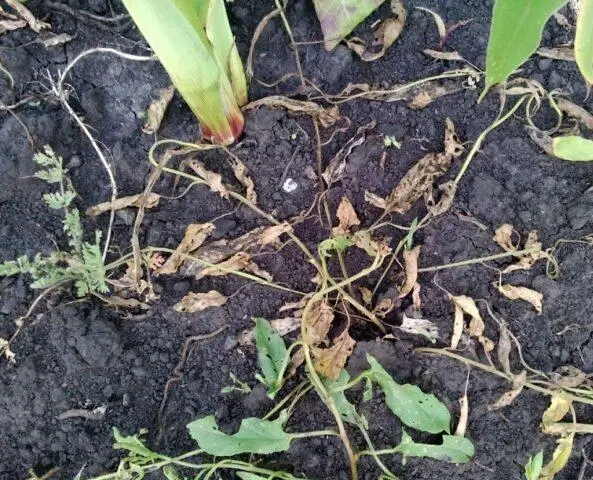
The growth and development of the weed is inhibited and freezes due to an “overdose” of phytohormones
The weed treated with Lontrel-300 herbicide quickly dies. The first results of “oppression” of its growth are noted already 12-18 hours after spraying. The stem is deformed, cracked, the leaves lose their tone and curl. Finally, the plant dies in 15-20 days.
Advantages and disadvantages
Among the objective advantages of the herbicide Lontrel-300:
- The ability to destroy the weed at almost any stage of its development.
- Rapid “absorption” in the tissues of harmful plants, spreading both over the aerial part and through the root system.
- The effectiveness of the drug Lontrel-300 against many weeds typical of Our Country, including those that, due to the developed root system, are almost impossible to remove completely when weeding by hand.
- Compatibility with other herbicides, fungicides and insecticides.
- No phytotoxicity to “cultivated” plants.
- Possibility to limit yourself to a single treatment per season.
- Safety for human health and pets provided that the manufacturer’s instructions are followed.
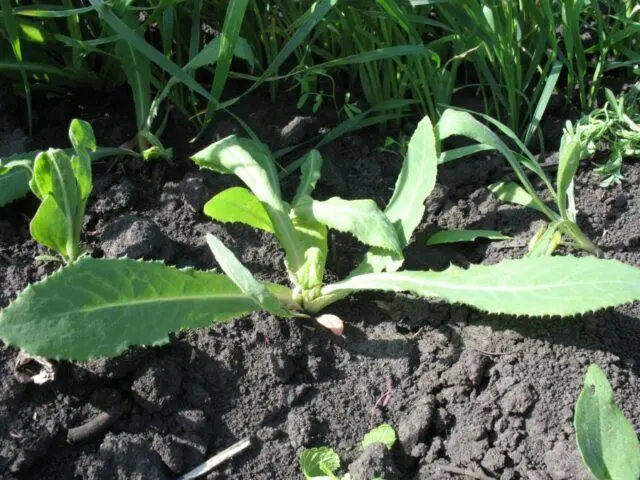
The first signs of wilting weeds after herbicide treatment are noticeable in a day
The disadvantages of the herbicide Lontrel-300 are very few:
- The inability to destroy the seeds and only emerging seedlings of weeds, in which the stem and leaves are still in their infancy.
- No effect against plants from certain families.
Preparation of working solution
The required concentration of the herbicide Lontrel-300 per 10 liters of clean water is indicated in the instructions. It depends on whether it is used on beds with horticultural crops or on a lawn.
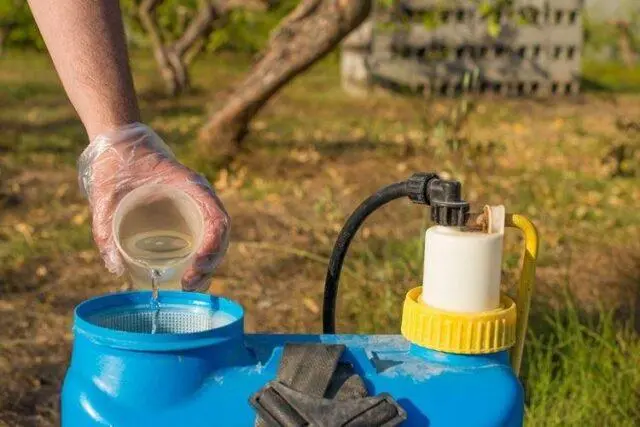
The working solution is immediately prepared in a container, from which weed spraying is then planned.
The algorithm is extremely simple:
- Fill the container about halfway with water. It should be clean and not too cold.
- Pour in the required volume of Lontrel-300 herbicide.
- Stir vigorously for 10-15 seconds.
- Add the remaining water to the container, stir again.
Application instruction of herbicide Lontrel-300
The range of temperatures at which the herbicide Lontrel-300 successfully “works” is quite wide – 8-25 °C. Most weeds are most sensitive to the chemical in the 2-10 leaf development phase. It is best to spray in the early morning or late evening, on a windless overcast day.
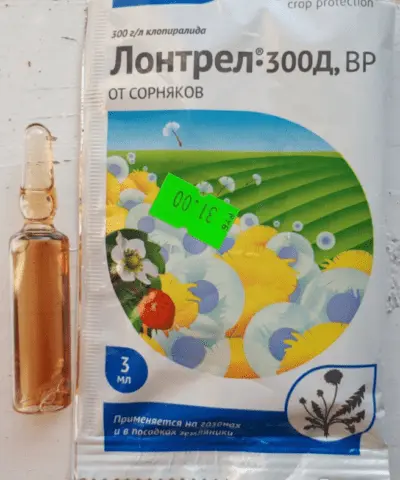
It takes 1-1,5 hours for the preparation to “absorb” into weed tissues; after that, precipitation does not affect its effectiveness
For maximum effectiveness, it is recommended to apply the solution to the leaves and stem of the weed as evenly as possible, using a sprayer or a slotted sprayer that allows the formation of medium-sized droplets. Upon completion of the treatment, all used equipment is thoroughly washed in cool running water.
The consumption rate of the herbicide Lontrel-300 is determined by which weeds you need to get rid of, how neglected the situation with weeding is. It also matters whether the solution is intended for beds or lawns. In any case, during the active growing season, the only processing of plantings is allowed.
Basic rules for the use of the drug, if not observed, serious harm to health is possible:
- it is forbidden to spray beds with onions and garlic if they are grown on greens;
- you should try to avoid getting even small drops of the solution on cultivated plants;
- it is impossible to process fruit and berry trees, shrubs until the harvest is harvested;
- any “manual” work on the beds can be started no earlier than three days after the treatment of weeds with herbicide Lontrel-300.
Herbicide Lontrel-300 for strawberries
The concentration of the working solution of the chemical for treating beds with strawberries is 1 ml per liter of water. Approximate consumption is about 6 liters per hundred square meters in personal household plots and 200-300 l / ha in farms.
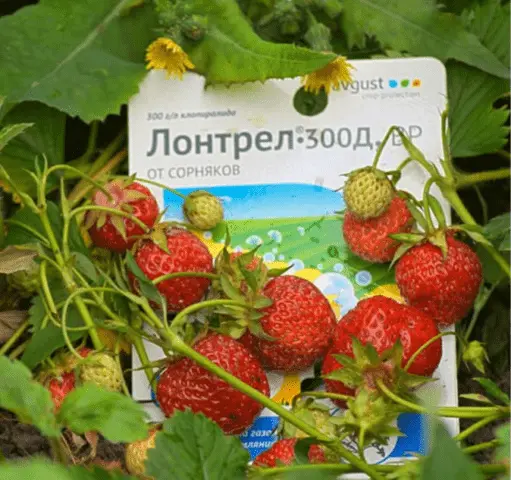
The herbicide is used mainly for the destruction of sow thistle, sorrel, dandelions, annual weeds on beds with strawberries.
Treatment with Lontrel-300 herbicide for strawberries during the budding period is strictly prohibited. Weeds are sprayed at the very end of the growing season, 10-12 days before the first frost. The chemical “depresses” the strawberries somewhat, preventing the plants from storing enough nutrients for a normal wintering.
Herbicide Lontrel-300 for onion and garlic
For processing plantings of onions and garlic, use the same solution as for strawberries. Each weed is sprayed “pointwise”, spending 15-20 ml of liquid per plant. The procedure is carried out 2-3 weeks after harvest.
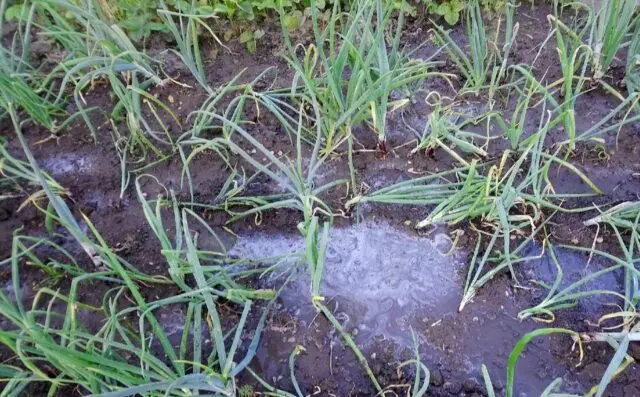
“Feathers” of onion and garlic from beds treated with Lontrel-300 are unsuitable for food
Herbicide Lontrel-300 for a lawn
Instructions for the use of the herbicide Lontrel-300 on lawns recommend the use of a weaker solution – 1,5-2 ml per 5 liters. The drug is effective against most annual and perennial weeds that spoil the appearance of the “green carpet” – dandelions, yarrow, chamomile, plantain. The approximate consumption rate of the herbicide Lontrel-300 is 5-6 liters per hundred square meters.

Processing with “mass” overgrowing with weeds is carried out after the first mowing of lawn grass, spraying the entire area
Compatibility with other means
Lontrel-300 can be used as a tank mix component, which includes any herbicides with a neutral or slightly acidic acid-base reaction. “Mix” with substances with a strongly acidic and alkaline pH means a flocculent precipitation, which negates the effectiveness of the entire “cocktail”. You can also add liquid fertilizers, biostimulants, insecticides and fungicides to the mixture.
Safety Precautions
Despite the fact that the herbicide Lontrel-300 is officially classified as hazard class III, it is prohibited to work with it without personal respiratory and eye protection (goggles, respirator). It is also necessary to wear waterproof clothing, shoes, gloves, that is, to close the skin to the maximum
In the process of preparing the working solution and spraying weeds with Lontrel-300 herbicide, you should not eat, drink, smoke. Children and pets are “isolated” in advance, not allowed into the cultivated area.
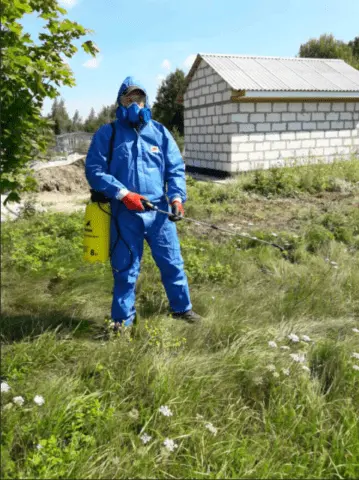
The chemical is diluted only in specially designed containers
In case of accidental contact with the herbicide solution Lontrel-300 on the skin or mucous membranes, immediately rinse this area in running cool water. If symptoms appear that indicate an allergic reaction (swelling, redness, hyperemia, itching, burning, rash), take any antihistamine and consult a doctor.
If the herbicide Lontrel-300 is swallowed, it is necessary to wash the stomach by drinking 3-4 glasses of a pink solution of potassium permanganate. When the condition of the victim indicates severe intoxication, it is necessary to deliver him to a toxicologist as soon as possible. This chemical does not have a special antidote, drugs are selected in such a way as to “remove” individual symptoms.
Analogues of the drug Lontrel-300
There are a lot of herbicides with the same active ingredient as the herbicide Lontrel-300. Most often, Agron, Biklon, Bis-300, Corrector are used on personal plots.
Other popular herbicides are Percalide, Zircon, Mastak. The first is an almost complete “copy” of Lontrel-300. The second is used mainly in large areas where cereals, sugar beet, corn, and rapeseed are grown. The third is most effective against weeds from the Asteraceae, Solanaceae, Lamiaceae, Buckwheat families, but its effectiveness is noticeably reduced with high humidity and heavy rainfall.
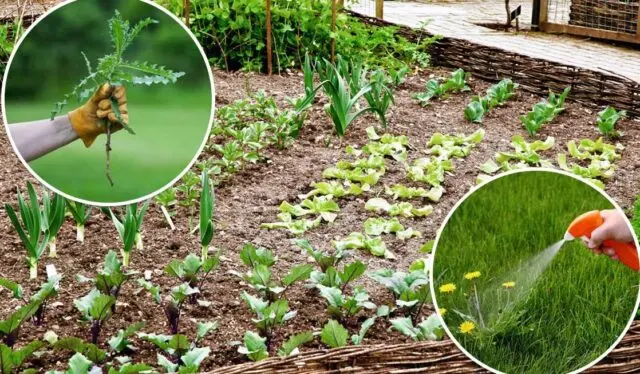
When choosing a herbicide for the garden, you need to consider which weeds prevail on the site.
Conclusion
Lontrel-300 herbicide is a chemical suitable for both “point” weed control in horticultural beds, and for controlling them in large areas of lawns. Its main advantages are systemic action and effectiveness against “undesirable” plants from different families. The chemical is officially recognized as moderately hazardous, but working with it requires strict adherence to the manufacturer’s instructions, precautions and the use of personal protective equipment. Otherwise, you can not only lose the crop, but also cause serious harm to health.










